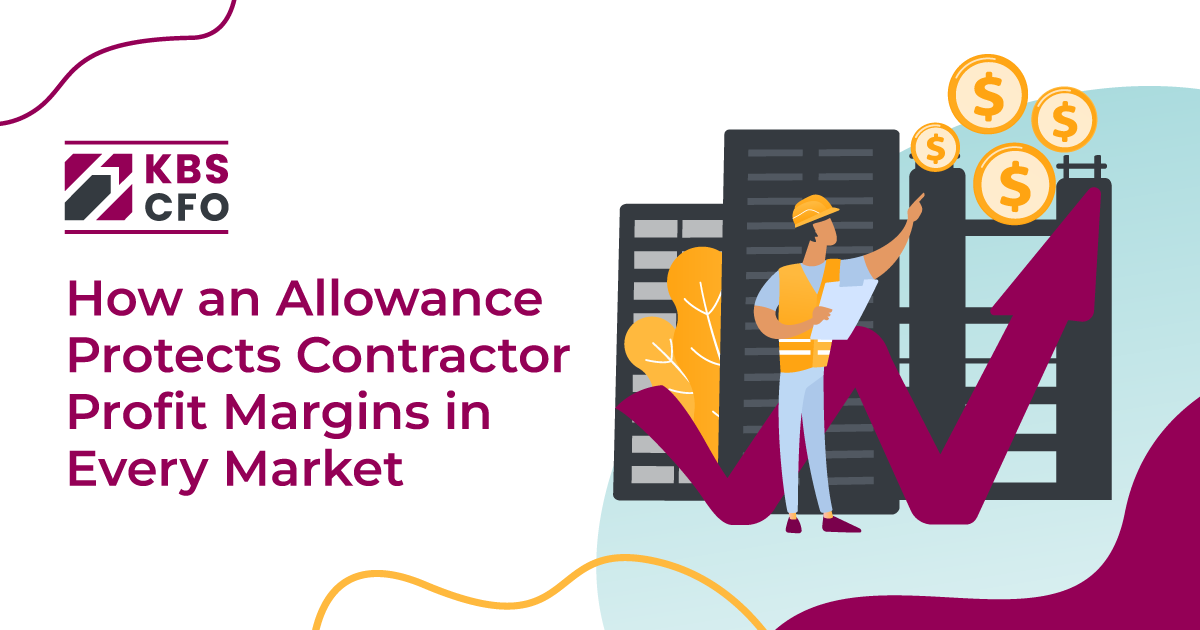Blog

Constructing your margin super powers – Allowances, Contingencies and more
Our accounting firm works regularly with general construction contractors. In the role as an Anticipatory Accountant, my job goes well beyond making sure their financial reports are capturing the accounting story accurately, they are in compliance with state and local tax regulations, liaising with the tax team. Although we do those things, too, the strategy side of finance comes into play with my contractor clients more frequently than the nuts and bolts aspects of accounting.
General contractors have unique challenges when it comes to estimating out jobs. And even though there has been some easing in 2023, material and labor cost hikes have made accurate bidding even more difficult. Cost of raw goods are all over the map and although the construction sector managed the pandemic-driven supply chain interruptions better than most, lead times continue to drive delays.
The good news is, demand for contractors remains very strong, despite volatile and rising costs. This is where the strategy side of our work together bears some serious fruit. I want my construction clients to leverage this high demand and pull in the revenue they need to sustain and grow their businesses. So, the question is…
“How can you estimate the costs of a construction job you are going to deliver when you have a difficult time controlling and monitoring costs that are completely out of control and make sure you don’t kill your margins or profit all together?”
It all comes down to keeping a regular pulse on all the costs flowing through the project, including allowances and change orders. At KBS CFO, we are tracking the costs throughout the job to potentially get in front of the inevitable uncertainties while protecting your profit margin. General contractors have a hard time managing the allowances and change orders without help. They are likely keeping up with a fast moving train, especially in recent years. Before diving into how important this is, let’s paint a clear picture of what an allowance is and how it differs from a contingency.
Allowance Versus Contingency in Construction
You will hear the words “contingency” and “allowance” in the context of estimating construction jobs. Sometimes people use them interchangeably, but they are actually different.
If you want to cover unforeseen risks or changes that may occur along the way with the project you’re bidding, a contingency can do that. It’s typically shown as a percentage of the entire contract amount. To be clear, your client can’t change the scope of work and get it covered under the contingency. The intent is to hedge against the unexpected things that are out of your control and can’t be predicted. Weather, uncovering problems that need to be fixed to push the project forward, or permitting issues are a few examples.
An allowance is different and what I recommend general contractors build into their estimates in a very strategic way. An allowance is shown as a lump sum, not a percentage and it covers things you know will be a part of the project but have unknown variables related to them. Think finishes, fixtures, appliances, labor…costs that are hard to predict in the current market or may not yet be defined by your client. This last bit is especially pertinent in residential construction as clients tend to make decisions after the project starts or change their minds about things midstream.
Handling Competitors Who Undercut Allowance to Win Business
When you are bidding jobs against competitors, you may be tempted to squeeze your allowance in order to win the business. Your competitors will definitely do this, but you should steer clear. This is not a good long-term strategy.
You don’t want to be the low-cost contractor. If you undercut yourself over and over, eventually you’re establishing yourself as the bargain and that’s not a sustainable market position. Not to mention it doesn’t attract the kind of clients you want to grow your business.
When you are up against a competitor who is clearly undercutting you to get the job, don’t be shy about explaining this to the client. Let them know you understand exactly how the competing contractor got such a low number, why you don’t do that, and how using that strategy to win business is harmful to the customer.
The undercut is really an over promise in terms of what they can deliver in both time and money. The client is going to end up paying more than promised and getting the project completed later than forecasted. Tell your client this. Establish your credibility on the topic, hold to your price, and win the business that is right for you. And if you lose contracts under these circumstances, don’t be surprised if that customer comes back to you and says they should have gone with you instead. Happens all the time.
You want your business to thrive in all market conditions. Take a strategic approach to your estimates and stay focused on the long-term with allowances that protect your profit margin and your reputation.
You don’t have to go it alone, either. Get an Anticipatory Accountant in your corner who can help you hedge against uncertainties of every kind and keep your business growing. KBS CFO serves construction contractors and would be happy to talk to you about your business. Contact us to set up an intro call today.
